All issues

Predecessor
Volume 47, Issue 2
Displaying 1-5 of 5 articles from this issue
- |<
- <
- 1
- >
- >|
46th Annual Meeting of the Japanese Association of Rehabilitation Medicine
Advanced Symposium
Advanced Symposium
-
2010 Volume 47 Issue 2 Pages 75-104
Published: February 18, 2010
Released on J-STAGE: March 03, 2010
JOURNAL FREE ACCESS
The Direction of Brain Machine Interface Research and Rehabilitation…Meigen LIU 75
Applying the Electroencephalogram-based Brain Machine Interface to Rehabilitation…Junichi USHIBA 79
Partially-invasive Brain Machine Interface : The Impact on Future Rehabilitation…Toshiki YOSHIMINE, Masayuki HIRATA, Takufumi YANAGISAWA, Tetsu GOTO, Koujiro MATSUSHITA, Youichi SAITOH, Ryohei FUKUMA, Yukiyasu KAMITANI, Hiroshi YOKOI 83
Mutually Adaptable Control and Application for Robotic Prosthetic Devices…Hiroshi YOKOI, Ryu KATO 88
Brain Machine Interface : From Basic Science to Clinical Application…Tadashi ISA 98View full abstractDownload PDF (2249K)
4th Annual Meeting of the Japanese Board-certificated Physiatrist Association
President's Lecture
President's Lecture
-
Yoshimi ASAGAI2010 Volume 47 Issue 2 Pages 105-110
Published: February 18, 2010
Released on J-STAGE: March 03, 2010
JOURNAL FREE ACCESSDownload PDF (2691K)
Originals
-
Youichi NAKAGAWA, Katsuhiko SANNOMIYA, Atsushi UEDA, Yukiko SAWAGUTI, ...2010 Volume 47 Issue 2 Pages 111-119
Published: February 18, 2010
Released on J-STAGE: March 03, 2010
JOURNAL FREE ACCESSWe collected and analyzed large-scale data concerning the fall of stroke inpatients in convalescent rehabilitation wards. Three hundred seventy-four of 1,107 inpatients experienced one fall or more, and 16 factors associated with falls were clarified by the chi-square test. To extract the significant item from a multifactor, the logistic regression analysis of 16 factors was carried out, and we developed an assessment sheet for the risk degree of first fall prediction in stroke inpatients. We selected eight variables as the items on the assessment sheet : history of previous falls, central paralysis, visual impairment, sensory disturbance, urinary incontinence, use of psychotropic medicines, mode of locomotion, and cognitive impairment. The total score of the assessment sheet was ranged from 0 to 10 and the mean score of fallers (6.4±1.5) among subjects was significantly higher than that of non-fallers (5.1±1.9) (p <0.001). When the subjects were classified into three groups, a significant difference (p<0.001) in the tendency of fall incidence in term of days after admission was found among the three groups on the basis of the Kaplan-Meier survival curve.View full abstractDownload PDF (429K) -
Satoshi TAKAGI, Noriko ISHIDA, Yuji HIRANO, Naoki ANDO, Tetsuya OIKE, ...2010 Volume 47 Issue 2 Pages 120-128
Published: February 18, 2010
Released on J-STAGE: March 03, 2010
JOURNAL FREE ACCESSWe investigated annual changes with respect to the period taken from the onset of illness to the prescription of lower extremity orthoses in hemiplegic patients after stroke, retrospectively from 1992 to 2007, in an acute phase hospital. We subdivided the initial period into three parts : the period of time from onset to the beginning of rehabilitation (T1), from the beginning of rehabilitation to the beginning of rehabilitation in the training room (T2), and from the beginning of rehabilitation in the training room to prescription (T3). Analysis was made with respect to the relationship between each of the aforementioned periods and the prescription time. Furthermore, we also analyzed the relationship between the length of stay of patients who had been prescribed orthoses, and the prescription time. The prescription time was found to have gradually shortened over time ; moreover, the period in question shortened in a rapid way in 2001, as compared with previous years (p <0.05). T3 showed the highest correlation coefficient (r =0.99), and the length of stay also exhibited a high correlation coefficient (r =0.97). We assume that the annual changes in prescription time might have been due to various underlying factors, namely, social factors, such as a shortening of the length of stay, caused by the differentiation of roles among hospitals, as well as medical factors such as the development of acute phase rehabilitation, or changes in perception of the ways in which orthoses may be used for stroke patients by rehabilitation staff.View full abstractDownload PDF (738K)
Regional Meeting
-
2010 Volume 47 Issue 2 Pages 129-132
Published: February 18, 2010
Released on J-STAGE: March 03, 2010
JOURNAL FREE ACCESSDownload PDF (384K)
- |<
- <
- 1
- >
- >|